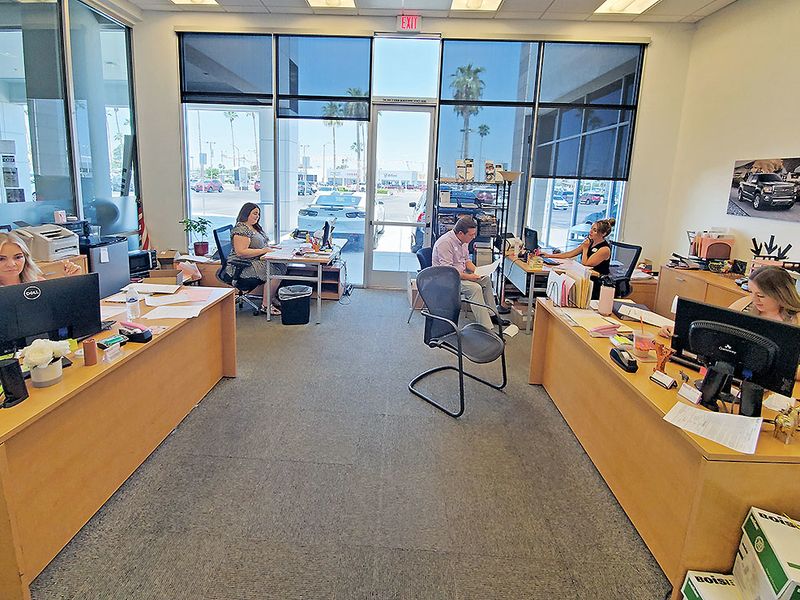
About a decade ago, Royal Automotive Group in Tucson, Ariz., reworked the sales model at its Kia store so that a customer no longer needed to work with multiple people to buy a vehicle.
Dealership group managers noticed that a number of subprime deals were taking a long time to complete, lengthening the wait for all customers to get into the finance and insurance office to finish transactions, said Kevin Cravo, Royal Automotive’s executive variable director. Group leaders, Cravo said, knew from survey data that the handoff to “the box” was a major pain point for customers.
“If you have one finance manager stuck on one subprime deal for two hours trying to hang that paper, it just clogged up the whole front of the house,” he said.
What emerged from that single-store shift includes a groupwide buying center that works with all six of Royal’s dealerships in Tucson, using hubs of employees housed at its Kia and Buick-GMC stores. Royal employs F&I managers only at its two Lexus stores, which also use the buying center.
About a dozen hourly buying center employees interact with lenders and handle other back-end tasks, Cravo said. They can process multiple transactions at once, eliminating the possibility of a queue of customers waiting to meet with a finance manager.
Under Royal’s model, multiple sales reps can present F&I menus to multiple customers at the same time. If all agree to the purchase terms, he added, “instead of having to wait to go through the finance manager one at a time, and that finance manager has to do a 20-minute presentation to sell products, one person in the buying center can print five deals.”
The strategy has helped employee retention and profitability, Cravo said. Finance employees who stayed with Royal transitioned to sales roles, in which they walk a customer through the entire purchase process and also sell F&I products. Buying center positions pay between $16 and $19 per hour, with the possibility of earning bonuses, said Jennifer Hurley, the center’s director.
An F&I manager who previously might have earned $120,000 wasn’t likely to move into an hourly role at the buying center, Cravo said. But in a sales role, he said, “if they sold cars at a high level and F&I products like they were probably doing, then they could make that kind of money on the sales floor and be their own kind of F&I manager, because they really would sell it themselves.”
Cravo declined to provide specific numbers but said F&I profit per vehicle retailed has more than doubled from its average eight to 10 years ago. The group’s reserve, or the money it receives from auto lenders for arranging indirect financing for customers, has tripled, he said.
Royal also reduced the time for contracts in transit to an average of five or six days from more than 10 before the change, Hurley said.
Also, transaction times have plunged. The group, which sells an average of 700 new and used vehicles each month, can complete all purchase steps through delivery within 60 minutes of a customer agreeing to a deal, Cravo said. Subprime buyers’ purchases are completed on average within 17 minutes from the time their credit is pulled — down from an average of an hour and 15 minutes before the change at the Kia store, Cravo said.
Subprime purchases also close at higher rates — 62 percent groupwide today vs. 40 percent at Kia as the first store to implement the new approach, he said. With the sales model and buying center now part of the company’s culture, the approach can be adopted quickly should the group open a new location or acquire a dealership, Cravo said.
Royal’s experience has dispelled the fear that profitability will slide if the finance manager role is eliminated, he said. Much of the group’s improved profitability can be attributed to the comfort level customers have working with a salesperson on their terms.
“We don’t have the friction of a finance manager kind of in the middle of it,” Cravo said. “So when they’re at the comfort of their home, in their office, we see that we sell more F&I products — the salespeople do — because they’re at their own leisure and they’re comfortable.”

